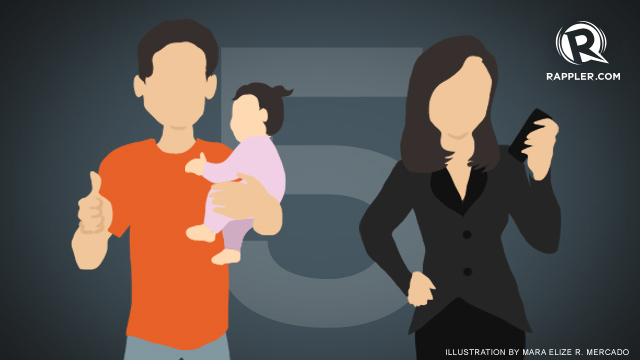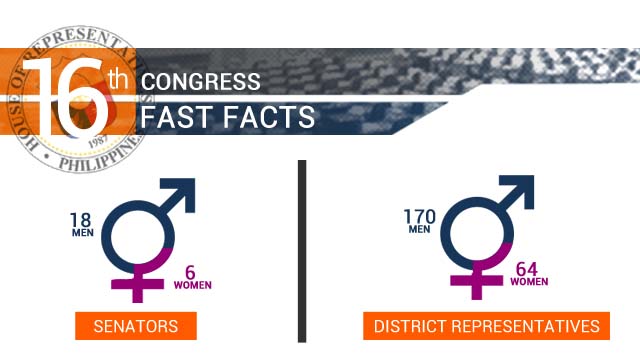SUMMARY
This is AI generated summarization, which may have errors. For context, always refer to the full article.

MANILA, Philippines (UPDATED) – The Philippines was better able to address inequalities between men and women in 2013 than the year before.
This is according to the 2013 Global Gender Gap Report, which ranks the Philippines 5th out of 136 countries in terms of progress in closing the male-female gender gap in economics, politics, education, and health.
In 2012, the Philippines ranked 8th.
“Philippines is the only country in Asia and the Pacific that has fully closed the gender gap inboth education and health,” the report reads.
The index measured gender disparities in education in terms of literacy and the ratio of men and women per education level. Health was measured in terms of life expectancy and the sex ratio at birth.
The report – a project of the World Economic Forum – measures “results” rather than “input.” The report focused on how the female population fared against the opposite gender, instead of gauging how well a country invested in female-friendly policies.
“This year, the Philippines scores a higher ratio in the wage equality survey, improves its estimated earned income, and has a larger representation of female professional and technical workers,” read the report.

ROI in women’s participation
The Philippines ranked 1st – tied with 31 other countries – in terms of women’s health and survival.
It also ranked 1st – tied with 24 other countries – in terms of women’s educational attainment.
While fully closing the gender gap in health and education, the country ranked 16th in terms of women’s economic participation.
The report concluded that investments made in women’s health and education generally gain a return of investment in women’s economic and political participation.
The Philippines had one data point (“women in parliament”) missing in the 2013 Global Gender Gap Report, leaving it out of the list in terms of the Gender Gap Index in politics.
As of 2013, Rappler data shows that women comprise less than 30% of Philippine Congress.
Globally, said the report, significant gains have been made in terms of women’s political empowerment.
(Check the interactive map below for the global rankings.)
Women in the workforce
Women are valuable assets in the workforce, the report says, reinforcing the need for diversity for innovation to flourish.
“Women may have a propensity for making more inclusive, informed decisions and for engaging in less risky behavior,” says the report, adding that “gender-equal teams may be more successful.”
The challenge, however, is not only to achieve equal opportunities for employment but equalopportunities for women to climb the corporate ladder.
“It is a loss for companies if these highly skilled women are forced to choose between work and family at later stages of their career,” the report reads.
The report – prepared by Ricardo Hausmann of Harvard University, Laura Tyson of the University of California in Berkeley, and Yasmina Bekhouche and Saadia Zahidi of the World Economic Forum – encourages business leaders and policy-makers to ensure practices that equalize opportunities for rising to positions of leadership within companies.
Citing data from the United Nations Economic and Social Commission for Asia and the Pacific Countries, the report says around $42 billion to $46 billion are lost each year in the region when women are restricted of job opportunities.
A matter of human rights
The Global Gender Gap Report started in 2006, tracking the progress of countries in dealing with gender-based disparities.
By utilizing the Global Competitiveness Index, the 2013 report also determines a positive correlation between a country’s competitiveness and its progress in closing the male-female gap.
For 2013, the Philippines jumped 6 notches higher in the Global Competitiveness Index and 3 notches higher in the Global Gender Gap Index.
“The most important determinant of a country’s competitiveness is its human talent – the skills, education and productivity of its workforce – and women account for one half of the potential talent base throughout the world,” the report says.
“Closing gender gaps is thus not only a matter of human rights and equity; it is also one of efficiency,” it concludes.
PCW reacts
A day after the release of the report, the Philippine Commission on Women (PCW) welcomed the good news, saying the country is “valuing women as active drivers of development.”
PCW is a government agency primarily tasked in championing gender equality.
PCW added, however, that much more can be done specifically in fully implementing the women’s bill of rights.
“Efforts to keep children in school especially boys, to expand economic opportunities for women and increase women’s participation in decision-making positions need to be accelerated and sustained in all spheres society,” it said in a statement. – Rappler.com
Add a comment
How does this make you feel?
There are no comments yet. Add your comment to start the conversation.